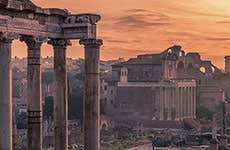
Colosseum
Known as the Flavian Amphitheatre, the Roman Colosseum is one of the world's most iconic monuments, and for good reason. Check it out with Civitatis.
The Colosseum is a defining symbol of Rome. This mighty structure boasts almost 2,000 years of history, and will bring you back in time to discover the way of life in the Roman Empire. Upon its completion, the Colosseum became the greatest Roman amphitheatre, measuring 188 metres (616 feet) in length, 156 metres (511 feet) in width, and 48 metres (157 feet) in height.
The Colosseum in Ancient Times
The construction of the Colosseum began in the year 72 under emperor Vespasian and was finished in the year 80 during the rule of the Titus. During the Roman Empire and under the motto of "Bread and Circuses" the Roman Colosseum (known then as the Flavian Amphitheatre) would have packed in around 80,000 people to enjoy its finest spectacles.
The exhibitions of exotic animals, executions of prisoners, recreations of battles, and gladiator fights kept the Roman people entertained for over 500 years. The last recorded games in history were celebrated in the 6th century. You can almost imagine what it would have been like for gladiators entering the arena to almost certain peril on this Colosseum tour + entrance via the gladiator's gate... A once-in-a-lifetime experience.
The Colosseum Today
Despite suffering lootings, earthquakes, and fires and being used at various stages in history as a storehouse, church, cemetery, and even a castle—the Colosseum still stands today as a magnificent, structure.
At present, along with the Vatican City, the Colosseum is Rome's greatest tourist attraction. Each year 6 million tourists visit it. On 7 July 2007, the Colosseum became one of the New Seven Wonders of the Modern World.
Did You Know...
- The original name (Flavian Amphitheatre) was changed to the Colosseum because in ancient times, outside the colosseum great statue of Nero that was located at the entrance of the Domus Aurea, "The Colossus of Nero". The Domus Aurea was a great palace built under the orders of Nero after the Fire of Rome.
- The emperor Titus inaugurated the Colosseum with 100 days of games, which took the lives of more than 2,000 gladiators.
- The Colosseum had a canvas ceiling to protect people from the sun. The machinery and cages were located beneath the arena.
- There are some theories that the Colosseum was filled with water for naval battle recreations, although for the moment there have not been conclusive investigations.
- Every Good Friday the Pope leads the Way of the Cross procession in the Colosseum. The Colosseum has long been closely connected with the church and on this day the early Christians that died in the arena are remembered.
How to Visit the Colosseum
The best way to skip the lines upon entering and to get to know the famous monument in detail is to take this guided tour of the Colosseum, Roman Forum and Palatine Hill. This tour allows you to skip what can be very tiresome lines and is accompanied by an expert local guide. If you're not doing a guided tour, be sure to arrive very early to avoid the crowds.
Another way to avoid lines is to buy the Roma Pass, a discount card that includes skip-the-line tickets to the Colosseum without having to wait in line.
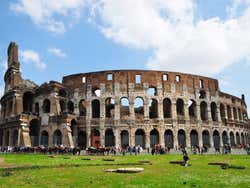
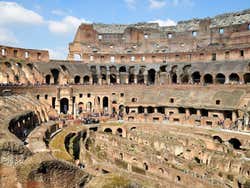
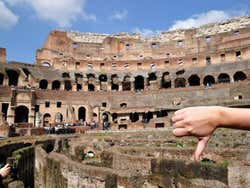
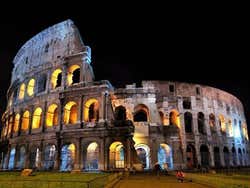
Schedule
- February 15 – 08.30 am to 4.30 pm
- February 16 to March 15 – 08.30 am to 5.00 pm
- March 16 to last Saturday of March – 08.30 am to 5.30 pm
- Last Sunday of March to August 31 – 08.30 am to 7.15 pm
- September 1 to September 30 – 08.30 am to 7.00 pm
- October 1 to last Saturday of October – 08.30 am to 6.30 pm
Closed on December 25, January 1, and May 1.
Price
Combo 24-hour ticket to the Colosseum, the Forum and the Palatine Hill:
Adults: € 18 (US$ 20.68)
Citizens of the European Union between 18 and 25 years old: € 2 (US$ 2.29)
Children under 17 years old belonging to the EU: free entry.
Free entry on the first Sunday of the month.
Colosseum Tour + Gladiator's Gate € 99 (US$ 113.74)
Transport
Metro: Colosseo, line B
Nearby places
Arch of Constantine (144 m) Basilica di San Pietro in Vincoli (421 m) Basilica di San Clemente (473 m) Palatine Hill (478 m) Roman Forum (511 m)
